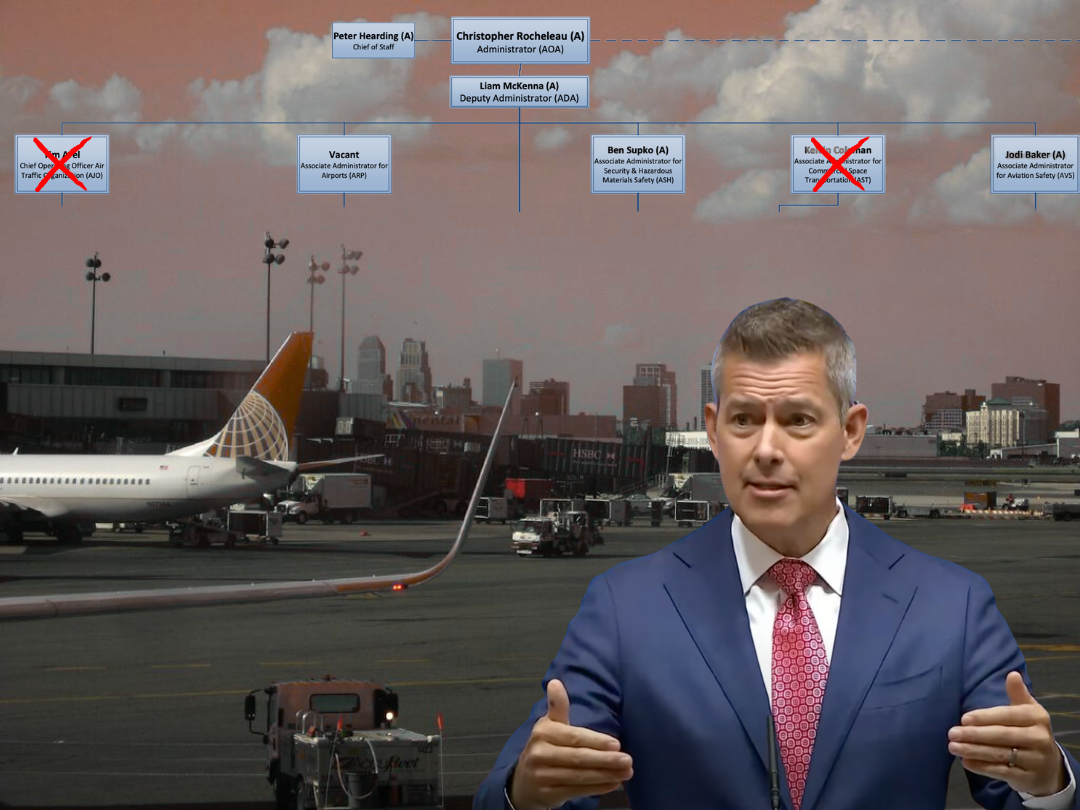Chaos Atop the FAA and at Newark International
3 minute readPublished: Tuesday, May 13, 2025 at 5:45 pm

**FAA in Crisis: Newark Blackouts, Leadership Exodus, and Safety Concerns**
The Federal Aviation Administration (FAA) is facing a crisis, marked by leadership instability, air traffic control blackouts, and growing safety concerns, particularly at Newark Liberty International Airport (EWR). This situation is exacerbated by a wave of resignations and early retirements within the Department of Transportation (DOT), including key FAA administrators. These departures, coupled with vacancies in crucial leadership positions, are raising serious questions about the agency's ability to effectively manage air traffic and ensure passenger safety.
Recent events at Newark highlight the severity of the problem. A technical issue caused a radio and communications blackout for air traffic controllers, leaving them unable to monitor flights for a significant period. This incident, coupled with staffing shortages, led to flight delays and cancellations. Compounding the issue, some air traffic controllers took federally permitted trauma leave following the incident, further straining resources.
Amidst the crisis, United Airlines CEO Scott Kirby drew criticism for deflecting blame onto air traffic controllers, characterizing their trauma leave as a "walk out." This characterization was widely criticized as misleading and insensitive, particularly given the traumatic nature of the event. The incident underscores the need for greater support and understanding for air traffic controllers, who bear immense responsibility for passenger safety.
The situation at Newark is not an isolated incident. The article points to a broader pattern of systemic issues within the FAA, including a decade-long air traffic shortage and a lack of investment in infrastructure. The administration's response has been criticized for deflecting blame and failing to take decisive action to address the underlying problems. The lack of redundancy in critical systems, coupled with the absence of strong leadership, has created a precarious situation that could lead to further safety incidents.
The article also highlights the potential for political influence within the FAA, particularly in the Commercial Space Transportation division. The departure of key administrators has created opportunities for the administration to appoint individuals aligned with specific interests, potentially compromising the agency's regulatory and safety oversight.
BNN's Perspective: The situation at the FAA is concerning. While the administration's response has been inadequate, it's important to acknowledge the complex challenges facing the agency. Addressing the staffing shortages, modernizing infrastructure, and fostering a culture of support for air traffic controllers are crucial steps. A bipartisan approach is needed to ensure the FAA can effectively fulfill its mission of ensuring air safety.
Keywords: FAA, Newark, Air Traffic Control, Blackout, Safety, Resignations, Leadership, United Airlines, Scott Kirby, Trauma Leave, Aviation Safety, DOT, Infrastructure, Staffing Shortage, Air Travel, Federal Aviation Administration.